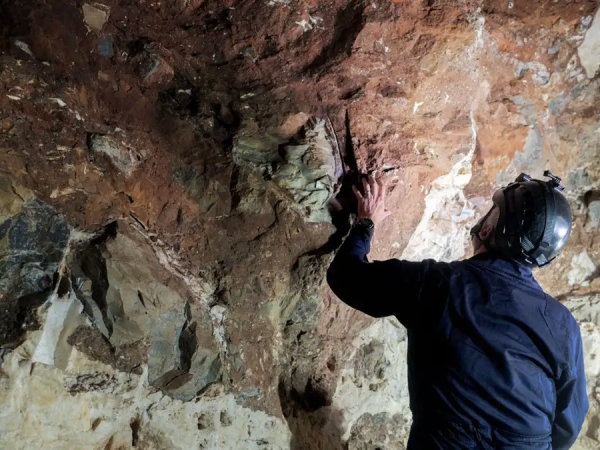Esteros de Iberá: 10 Reasons Why It’s Argentina’s Hidden Gem

Nestled in the heart of northeastern Argentina, the Esteros de Iberá is a vast wetland ecosystem that remains one of the most underrated destinations in the country. This pristine haven for wildlife, adventure, and tranquility is often overshadowed by iconic landmarks like Patagonia or Iguazú Falls, but those who venture to this magical region are rewarded with unparalleled experiences. Here are 10 reasons why Esteros de Iberá should top your travel bucket list.
1. A Biodiversity Wonderland
Esteros de Iberá is a paradise for nature enthusiasts. Spanning over 13,000 square kilometers, it’s one of the largest freshwater wetlands in the world. The region boasts a rich variety of flora and fauna, including over 350 bird species, 85 mammal species, and countless reptiles, amphibians, and fish. Expect to encounter capybaras, caimans, howler monkeys, and the elusive maned wolf in their natural habitat.
2. A Sanctuary for Birdwatchers
With its diverse ecosystem, Esteros de Iberá is a dream come true for birdwatchers. Rare and endemic species, such as the strange-tailed tyrant, black-collared hawk, and jabiru stork, thrive here. Whether you’re a professional ornithologist or a casual bird lover, the wetlands’ vibrant skies and serene waters offer endless opportunities to spot these feathered wonders.
3. Rewilding Success Stories
Esteros de Iberá is at the forefront of rewilding efforts in Argentina. Organizations like the Conservation Land Trust (CLT) have been instrumental in reintroducing native species that were once extinct in the region. Jaguars, giant anteaters, and pampas deer have all made remarkable comebacks, making it a model for global conservation efforts.
4. A Peaceful Alternative to Crowded Destinations
Unlike Argentina’s more popular tourist hotspots, Esteros de Iberá offers a tranquil escape. The wetlands remain relatively untouched by mass tourism, allowing visitors to immerse themselves in nature without crowds. It’s the perfect destination for those seeking serenity and a break from urban life.
5. Boat Safaris Through the Wetlands
One of the best ways to explore Esteros de Iberá is by boat. Glide through the glassy waters as you observe the region’s unique ecosystem up close. Boat safaris provide the opportunity to encounter caimans basking on riverbanks, playful otters swimming nearby, and a variety of fish darting beneath the surface.
6. Thrilling Adventure Activities
Adventure seekers will find plenty to do in Esteros de Iberá. Kayaking through narrow waterways, horseback riding along scenic trails, and hiking in the surrounding forests are just a few of the activities that promise an adrenaline rush. Each adventure allows you to experience the wetlands from a different perspective.
7. Stunning Sunrises and Sunsets
Few places in the world offer sunrises and sunsets as magical as those in Esteros de Iberá. The wetlands’ wide-open horizons create the perfect canvas for breathtaking displays of light and color. Whether you’re an avid photographer or simply enjoy quiet moments in nature, these scenes will leave you spellbound.
8. Rich Cultural Heritage
The region surrounding Esteros de Iberá is steeped in history and culture. Local Guaraní communities have lived in harmony with nature for centuries, and visitors can learn about their traditions, crafts, and cuisine. Don’t miss trying local dishes like “mbaipy” (a traditional corn stew) or participating in a mate-sharing ritual.
9. Eco-Friendly Lodges
Esteros de Iberá is home to a selection of eco-friendly accommodations that provide comfort while prioritizing sustainability. These lodges blend seamlessly with the natural environment and offer amenities such as guided tours, local cuisine, and stargazing opportunities. Staying at one of these lodges enhances your connection to the wetlands while supporting conservation efforts.
10. Accessible Yet Off-the-Beaten-Path
While Esteros de Iberá feels remote and untouched, it’s surprisingly accessible. The wetlands are located in the province of Corrientes, and towns like Colonia Carlos Pellegrini serve as gateways to the region. Domestic flights, buses, and car rentals make it easy to plan your journey. Its relative obscurity adds to its charm, as you’ll feel like you’ve discovered a hidden treasure.
Conclusion
Esteros de Iberá is a testament to the beauty and resilience of nature. Its incredible biodiversity, cultural richness, and commitment to conservation make it a must-visit destination for travelers seeking authentic and meaningful experiences. Whether you’re a wildlife enthusiast, an adventure seeker, or someone looking for peace and tranquility, the wetlands have something for everyone. Don’t miss the chance to explore this hidden gem of Argentina.
FAQs
1. Where is Esteros de Iberá located?
Esteros de Iberá is located in the province of Corrientes, northeastern Argentina. It’s one of the largest wetland ecosystems in the world.
2. What is the best time to visit Esteros de Iberá?
The best time to visit is during the dry season, which typically runs from May to October. During this time, wildlife is more visible, and the weather is pleasant.
3. What kind of wildlife can I see in Esteros de Iberá?
You can see a wide variety of wildlife, including capybaras, caimans, howler monkeys, marsh deer, and countless bird species. With some luck, you might spot jaguars or maned wolves.
4. How do I get to Esteros de Iberá?
The easiest way to access Esteros de Iberá is by traveling to Colonia Carlos Pellegrini. You can fly to Corrientes city and then drive or take a bus to the wetlands.
5. Are there accommodations available in Esteros de Iberá?
Yes, there are eco-friendly lodges and guesthouses in the area, particularly around Colonia Carlos Pellegrini. These accommodations offer guided tours and other amenities to enhance your visit.
Also read : Big Sur CA USA: 10 Breathtaking Views You Must See











